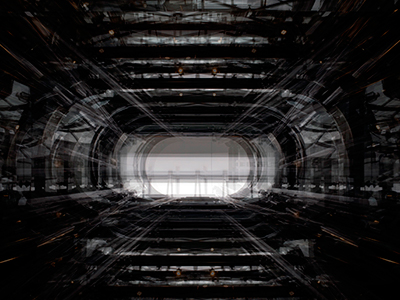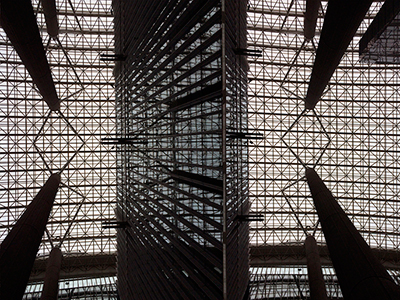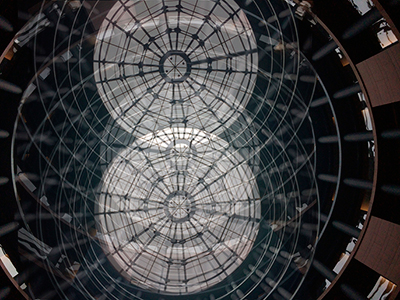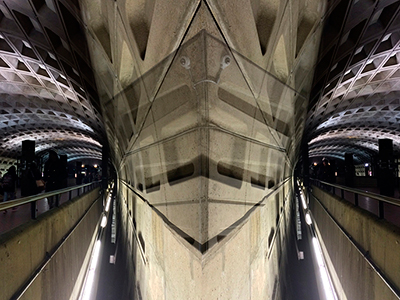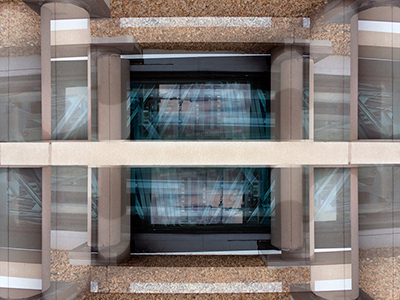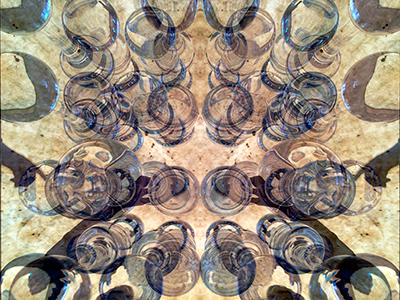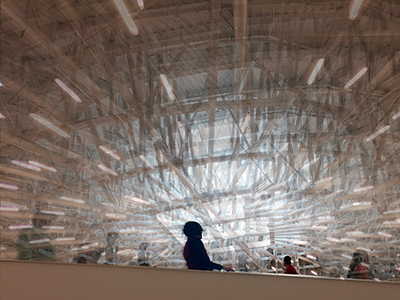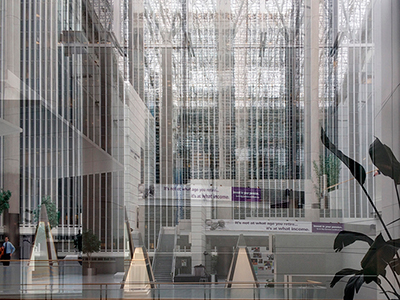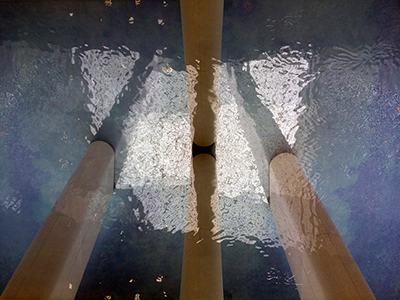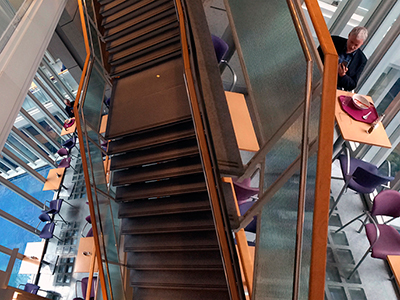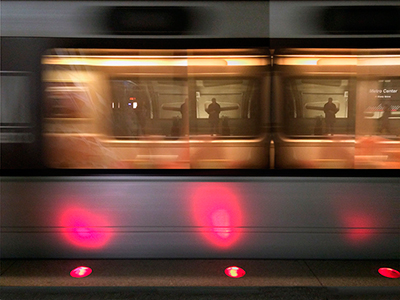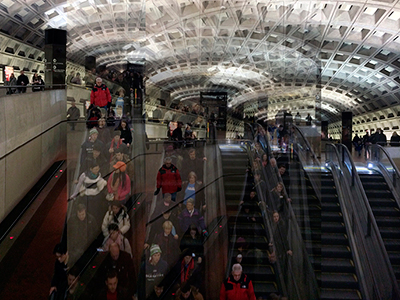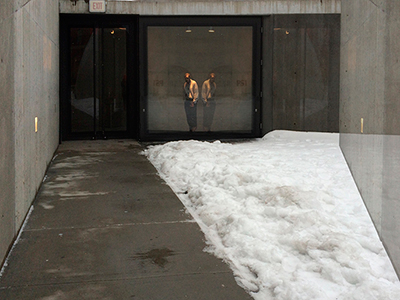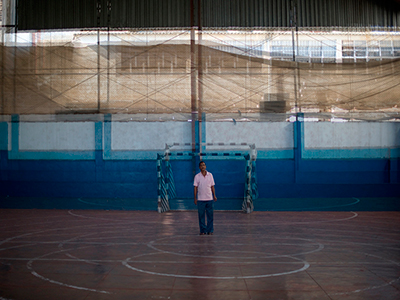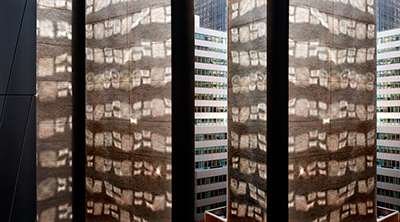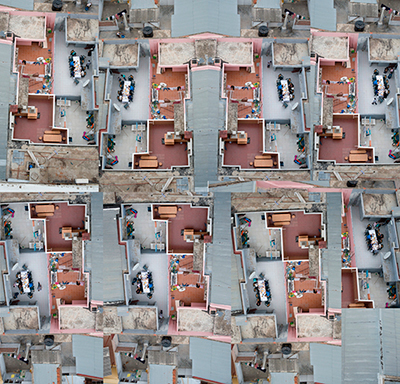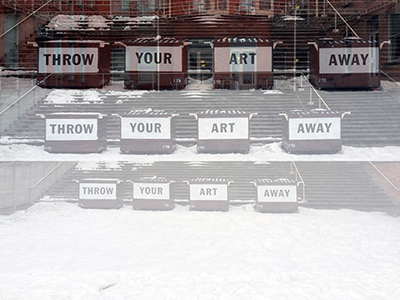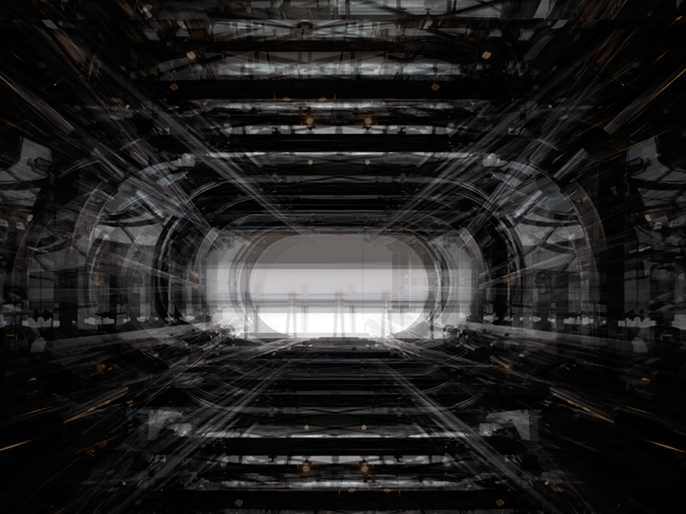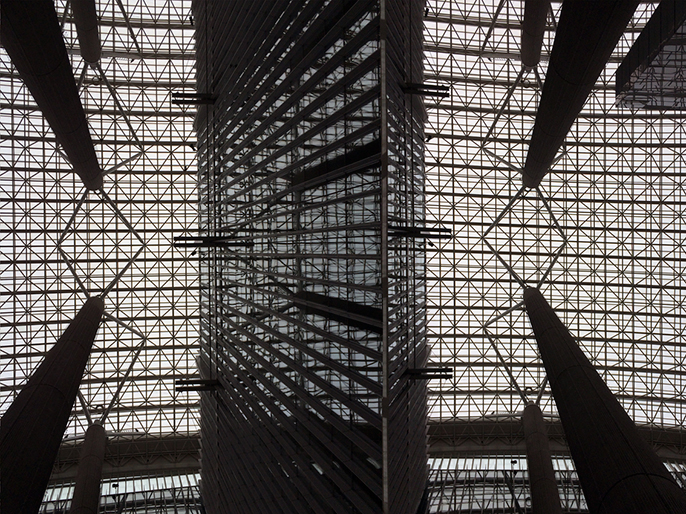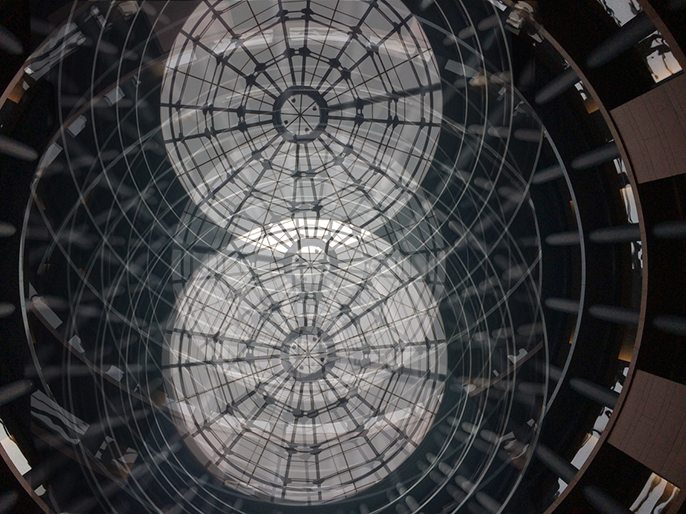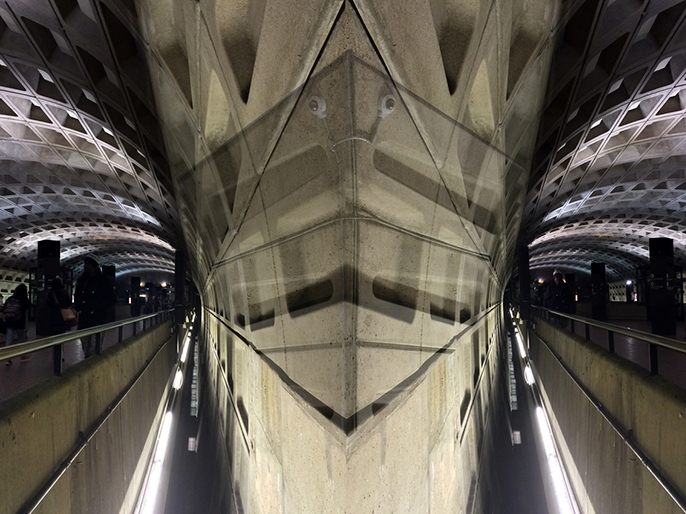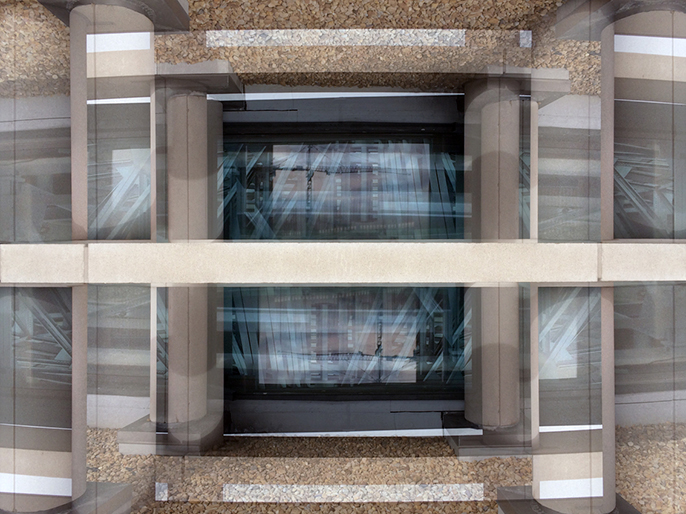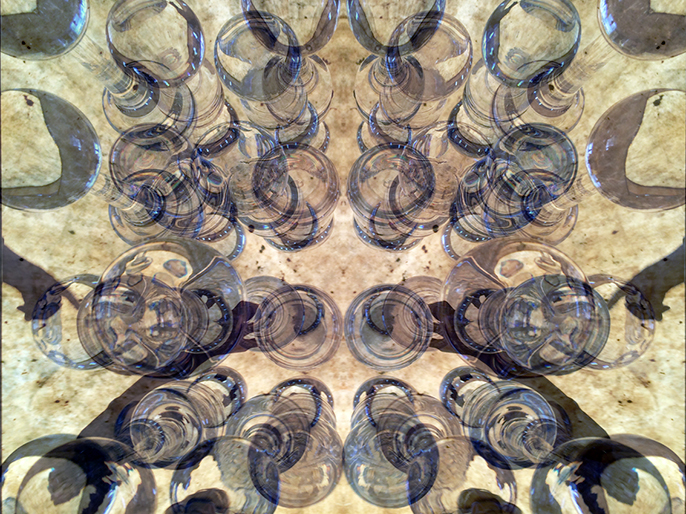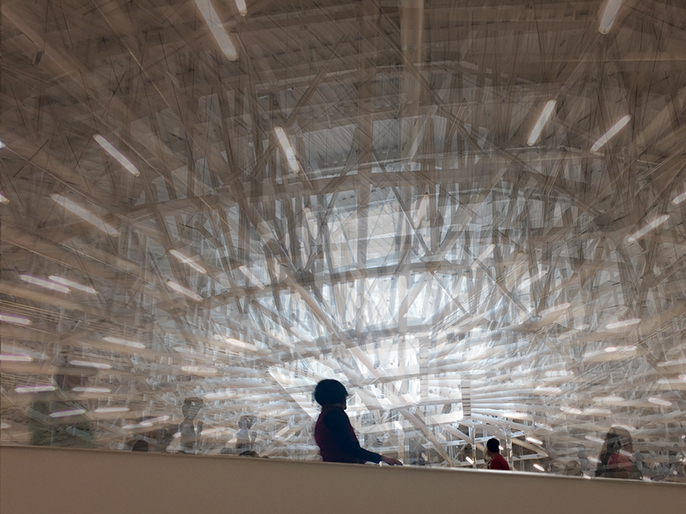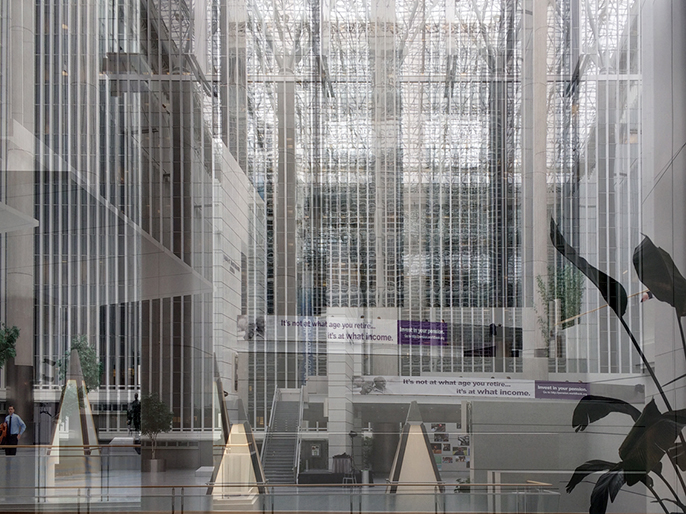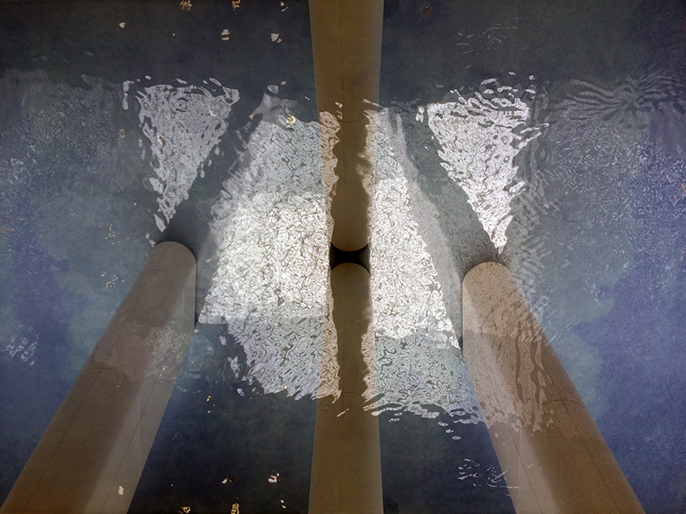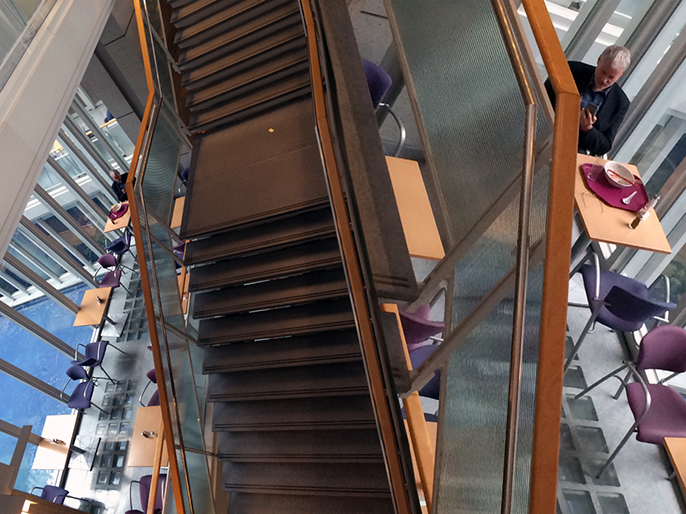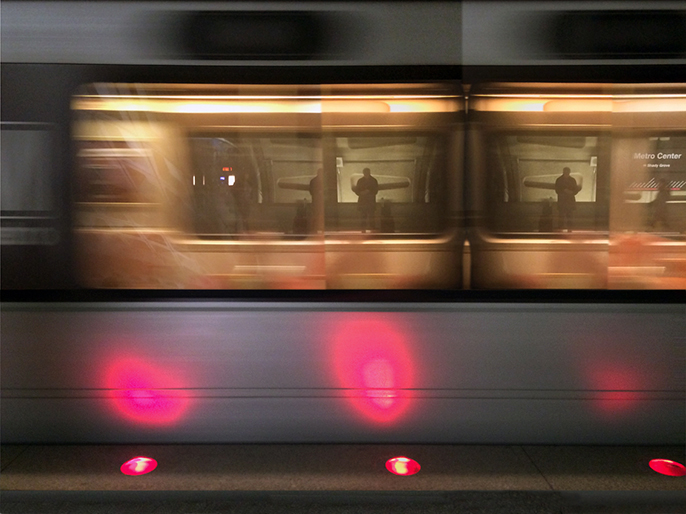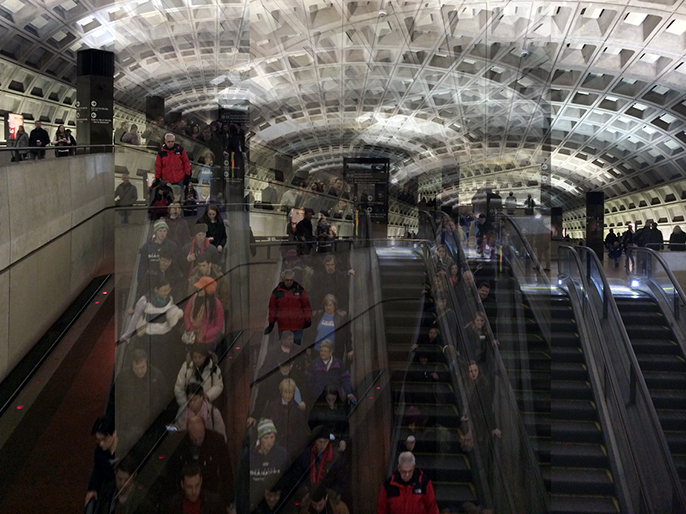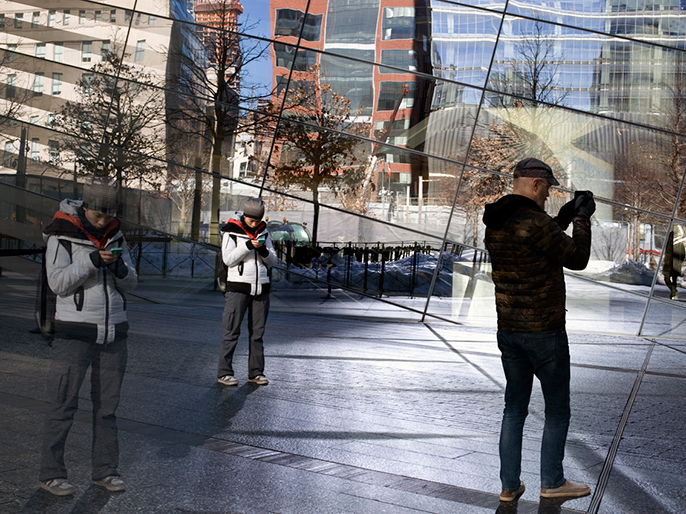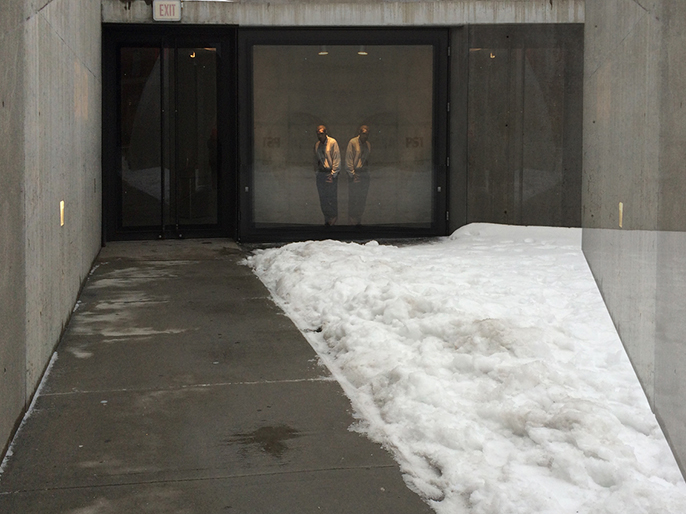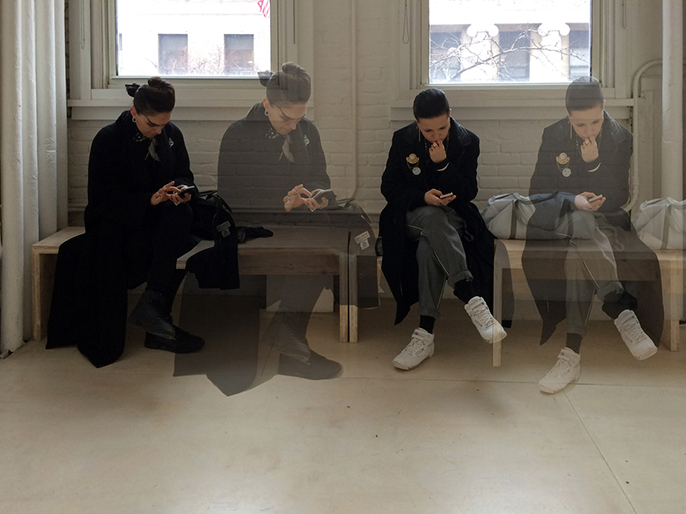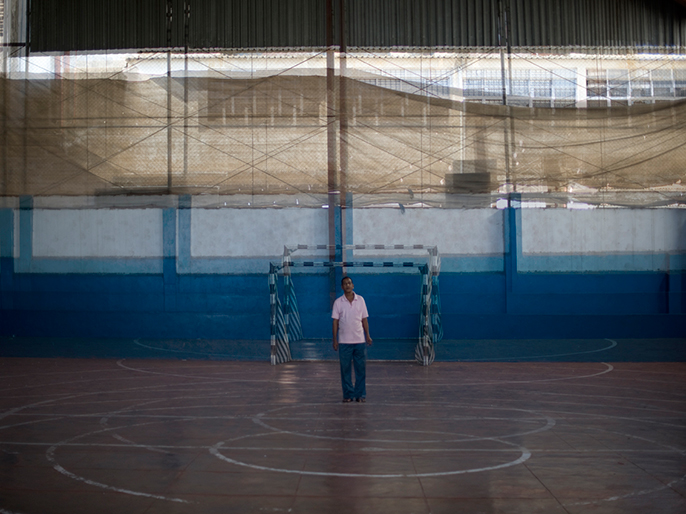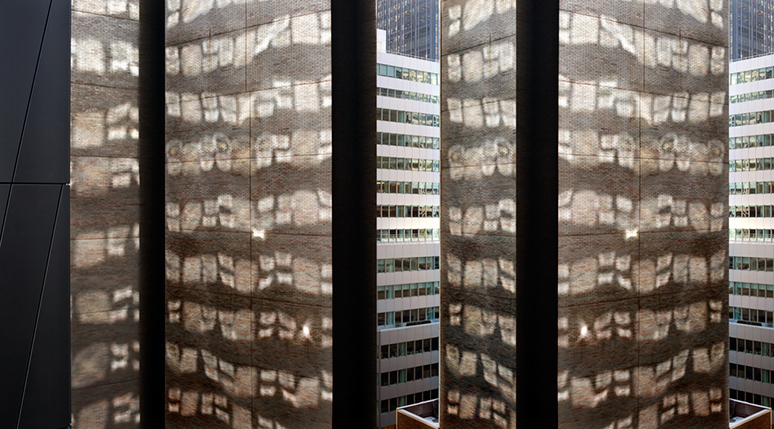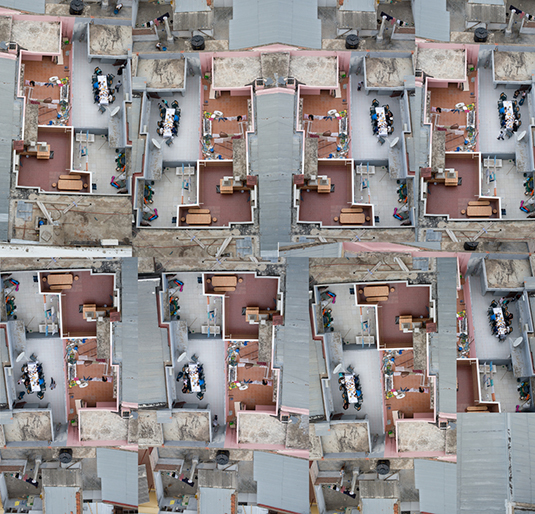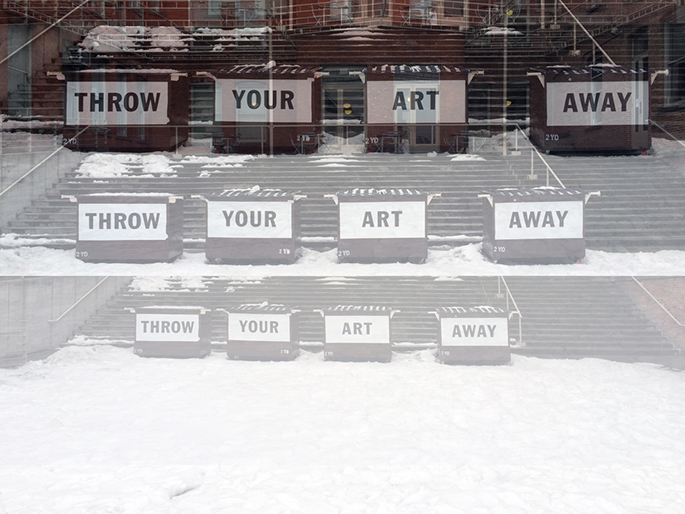Data Rush è una sorta di ossimoro. Implicitamente i dati sono oggetti di osservazione che richiedono interpretazioni, riflessioni, meditazioni. «Rush» implica un'azione accelerata, uno sprint, volata, scatto, un impegno massimo.
In questi ultimi anni, il numero dei dati, che circolano in rete, aumenta in forma più che esponenziale. Le tecnologie sono costrette a diventare sempre più complesse e, per poter gestire così tanta informazione, si rinnovano in «multi-core» (con più cuori, con molteplici nuclei). Vengono chiamate Big Data o anche Data Rush.
Osservo sistemi che si cibano di dati che noi utenti, singoli individui o imprese, immettiamo nel sistema stesso. Si creano strutture, sempre più complesse, che si nutrono dei nostri scambi informativi e noi, forse, non abbiamo coscienza sufficiente per capire quanto ciò sia fonte di ricchezza, nel suo senso più ampio, per il sistema stesso.
I soggetti delle mie fotografie sono architetture, che s'intrecciano tra loro, proprio come le tecnologie complesse, e persone, individui solitari, individui nelle loro situazioni familiari, individui in contesti pubblici.
E' questo per me il senso dell'ossimoro «Data Rush» che tento di visualizzare usando piani distinti, livelli derivati dai due elementi opposti: la calma e la frenesia, la riflessione e lo sprint finale.
Penso ad un concetto di relazioni a venire, quelle di «Il futuro non arriva mai» come scrisse l'artista britannico Robert Pepperell nel suo Manifesto del Postumano (1995).
Un futuro che, immagino, porterà maggiori opportunità agli individui, almeno per quelli che vivranno in un ambiente favorevole.
Queste opportunità le ho visivamente interpretate come piani distinti: reale e virtuale, là e qui, storia e cronaca. Livelli plurimi, dove gli individui si intersecano, si spostano, ma anche si compromettono, si compenetrano, in un gioco di sovrapposizioni, trasparenze, duplicazioni.
Così io, fotografa, scatto principalmente con l'iPhone, come oggi tutti fanno, perché ciò che differenzia l'occhio del professionista è il progetto. Non solo, perché io, o chi altri, essendo in relazione con i miei soggetti, mi accorgo di appartenere, io stessa, alla nuova categoria dei Big Data.
Patrizia Bonanzinga
Data Rush is comparable to a sort of oxymoron, where “Data” are impliedly observed, interpreted, deliberated and meditated upon. “Rush”, as the word suggests, implies acceleration, sprint, and rapid movement.
In the course of the past few years, the amount of data circulating through the net has been growing more than exponentially. Consequently, technologies have become increasingly complex and in order to process so much more information, multi-core technology, which is known as Big Data or Data Rush, has been deployed.
I remark that Data Processing Systems feed on information from end users on the net, whether they're individuals, or business related applications. In this way, ever more complex structures allow high throughput analytics on massive data sets and perhaps we are not sufficiently aware to fully understand how much all of this enriches, in the wider sense of the meaning, the system itself.
The subject matter of my photographic works are purely architectural, as they intertwine just like complex technology does, and as groups of people, solitary individuals, persons involved in both familiar and public contexts.
For me, the meaning of Data Rush as an oxymoron which I try to visualize through the use of separate planes and levels derived from opposing viewpoints as tranquillity is to excitement, and how careful consideration can be to jerky movement, just like the photographer's action.
I pause to think about a concept of things to come and quote from Robert Pepperell's Post-Human Manifesto (1995) “The future never arrives”.
A future, which I imagine will bring greater opportunities to those discerning individuals, or at least to those that will be living in favourable environments.
I have visually interpreted these opportunities on different levels: real and virtual, here and there, narratives and news reports. A platform made up of numerous levels where individuals interlace, cross and move but also reveal themselves, and interpenetrate in overlapping plays of transparent see through duplications.
So here am I, a photographer mainly clicking away with an I-phone, as everyone does today, because what a professional discerning eye can differentiate between is one's own project. Moreover, since I am connected with my subjects, not only I, with many more, am well aware of where I belong: to the new Big Data category.
Patrizia Bonanzinga




